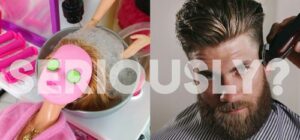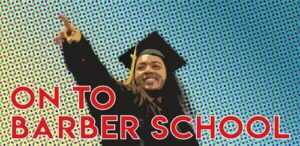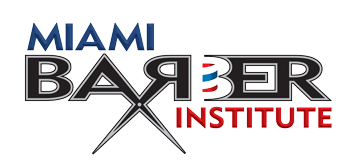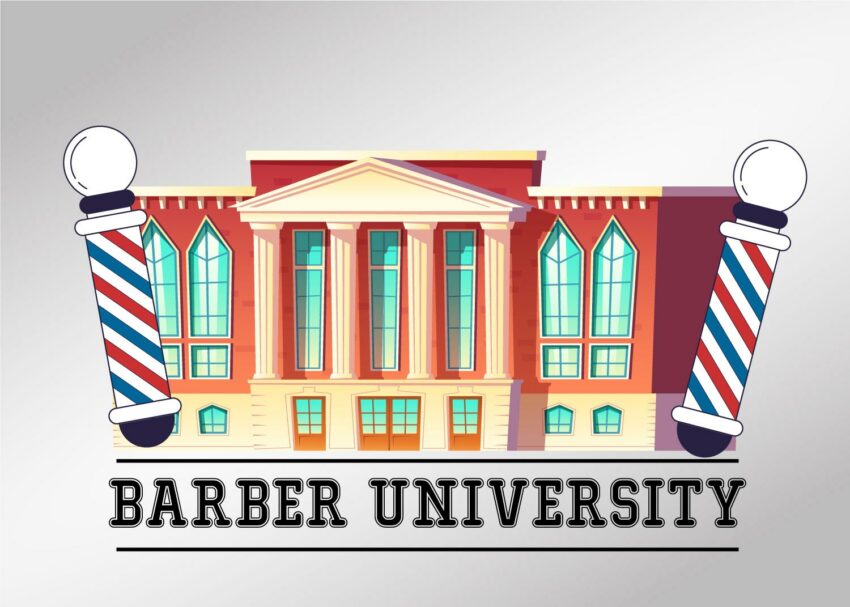If you have been thinking about going to a barber school, but had a hundred question, keep reading. In this article “If you have been thinking about going to a barber school”, keep reading.
For those of use born before the 90s, the word barber conjures up visions of old-timers in barber salons with the iconic striped bar. Nowadays, when I hear the word barber, I have a totally different image. Now, when I think of a barber, I picture a hip, often tattooed or even pierced person (often times a male) serving up trendy men’s hairstyles and beard trims. Who would of thought of this modern-day men’s grooming renaissance?
Barbering (yes, that’s what it’s called) is part skill and part artistry. Some who pursue this career know early on that this is what they want to do, others get inspired to become barbers. At this point, you may be collecting information to make a decision on what type of barber school is right for you.
You are in the right place! Here, you will learn just about everything you need to select a barber school or training program. Over the last few years barbers have garnered much attention. There is some confusion on what barbering actually is.
Barber, Not Stylist
 Barbering has a long history and is steeped in old traditions. Many modern barbers still use the same equipment or tools as their predecessors. Barbers still practice the old techniques and upgraded them with more modern touches. As a barber, you get to specialize in the cutting, trimming, and styling of hair, mustaches, and beards. Barbers specialize in masculine style, providing facial, shaving, and hair-cutting services for men. The barber profession has been experiencing a resurgence in popularity. According to the Bureau of Labor Statistics (BLS) “Employment of barbers is projected to grow 13 percent from 2016 to 2026, faster than the average for all occupations.” If you’re itching to get started, just remember, you will need specialized schooling and a license to practice.
Barbering has a long history and is steeped in old traditions. Many modern barbers still use the same equipment or tools as their predecessors. Barbers still practice the old techniques and upgraded them with more modern touches. As a barber, you get to specialize in the cutting, trimming, and styling of hair, mustaches, and beards. Barbers specialize in masculine style, providing facial, shaving, and hair-cutting services for men. The barber profession has been experiencing a resurgence in popularity. According to the Bureau of Labor Statistics (BLS) “Employment of barbers is projected to grow 13 percent from 2016 to 2026, faster than the average for all occupations.” If you’re itching to get started, just remember, you will need specialized schooling and a license to practice.
According to the BLS, every state mandates that a barber complete barber school and become licensed to practice in that state. If you don’t go to a licensed school for training in barbering, you cannot legally work in that state. Each state has their own requirements, so it is learn what your state’s requirements are. For the State of Florida, click here.
Occupational Licensing.com reports that barbering is the “fourth most heavily regulated occupation among moderate-income occupations,” when compared to other types of occupational licenses.
Is There A Difference Between Beauty or Cosmetology School and Barber School?
 It makes sense that most beauty schools have a barbering course or program. Though the two both train you in how to cut and style hair, there are vast differences between the two. Knowing the difference is important when selecting a barber school.
It makes sense that most beauty schools have a barbering course or program. Though the two both train you in how to cut and style hair, there are vast differences between the two. Knowing the difference is important when selecting a barber school.
The online career site, Beauty Schools Directory, “barber school will teach you how to properly cut, style and color (primarily) men’s hair and facial hair. In contrast, a cosmetology or beauty school will provide a more varied education that typically includes skincare, nails. Hair and makeup for male and female clients, though typically female clients are the bulk.
Most barber programs can be completed in about 9 to 12 months depending on available program schedules. Ost courses start you out with the basics; general information, safety and sanitation, and later get you on more advanced techniques of shaving, hair coloring and cutting as you progress through the program. Beauty schools will provide more varied selection of training topics and interestingly, are not allowed to use a straight razor during cuts 🤨. Regardless of the technical differences between the two, it is important that you go into these fields with a passion. They are creative fields and offer a creative outlet for those who enjoy this line of work.
What to Expect from A Barber School Curriculum?
Every school will have its own unique atmosphere, teaching methods and style, but most barber schools’ curriculums include classes in the 8 areas:
It is Your responsibility to provide a clean and safe experience for your clients. These courses include sanitizing, disinfecting, and sterilizing procedures.
Study of the basic sciences including physiology of the hand, arm, head, and face, applying to areas which barber work is done.
Students learn the fundamentals of shaving, positions and strokes and the application of these fundamentals are practiced through preparation of the patron’s face.
Specialized subject in chemistry of cosmetic products used in the barber field. Includes studying the basic theory of molecular structure, simple organic chemistry, and the application of various compounds to cold waving, hair relaxers, chemical processing, shampoos, rinses, dyes, and various hair preparations.
Designed for persons interested in managing and owning a barber shop. Topics include local, state and federal regulations, business math, accounting and taxes, inventory control, customer relations, sales, marketing, record-keeping, and equipment and time utilization.
Understanding your client’s needs and providing them with helpful information about how to maintain their look or how to achieve a look goes a long way in building a successful client base.
Study in styling hair, shampooing, hair design, scalp massage, curling, brushing and combing, reconditioning hair, thermal pressing, iron curling, and hairpiece fitting and care.
Fundamentals in haircutting for both male and female. Important steps for a complete basic haircut. Procedures for cutting hair with clippers, shears, and razors. Manipulative skills are developed in correct methods of razor and scissor hair Shaping.
How Long Does It Take To Finish Barber School?
If you cannot solely focus on school because you are working or for some other reason, then it may take longer than the typical 9-12 months to complete a barber course. Barber schools have their own schedules and time requirements, but the BLS indicates that most full-time programs take nine months or more to complete. Check your state requirements and regulations before committing to a school.
What Are the Requirements to Get Into a Barber School?
Provide Proof of The Two Minimum Requirements:
- Must be 16 years of age or older.
Proof can be a state-issued photo ID, like a driver’s license or a state ID. - Have graduated from high school or have completed an equivalent diploma or degree—unless you’re in a program offered by a high school that teaches barbering.
High school graduation or its equivalent can often be shown by providing a copy of your diploma, your GED (General Education Development or General Education Diploma), or if you cannot locate either, your high school transcripts.
 If you cannot solely focus on school because you are working or for some other reason, then it may take longer than the typical 9-12 months to complete a barber course. Barber schools have their own schedules and time requirements, but the BLS indicates that most full-time programs take nine months or more to complete. Check your state requirements and regulations before committing to a school.
If you cannot solely focus on school because you are working or for some other reason, then it may take longer than the typical 9-12 months to complete a barber course. Barber schools have their own schedules and time requirements, but the BLS indicates that most full-time programs take nine months or more to complete. Check your state requirements and regulations before committing to a school.
Some barber schools ask that you provide letters of recommendation or even personal essays as part of their application or enrollment requirements. There may be some that may require you to pass an aptitude or entrance exam. Every school is different, so be prepared and find out before deciding. If you are applying for financial aid, be aware that you might need your tax records from previous years, and if you are under 24 years old, you may need your parent’s tax information. Providing tax information is becoming increasingly rare since anyone applying for Federal Financial Aid goes through the online FAFSA (Free Application for Federal Student Aid).
How Do I Pick the Right Barber School?
There is no right school for everyone. People have unique preferences and ultimately, you have to go with the school where you feel most comfortable and that will provide you with support to accomplish your goal of becoming a barber. Here are some things to consider when making your selection:
- Is it licensed by the state?
- Are you able to get to the school as needed to complete the course?
This may sound obvious, but location and schedule play a role here, especially if you are working. - Is it reputable? What do graduates and students say about the school?
- Schedule a tour of the school so you can see for yourself. There is no better way to tell if a school is right for you than visiting the school.
- Some schools provide free or low-cost haircuts for the public. This is done so that the students gain hands-on experience with real clients. Booking a free haircut will give you better insight into how the school teaches its students.
- The student-teacher ratio:The smaller this ratio is, the more attention the instructor can provide to each student.
- Graduation Rate: Look at how many students graduated out of the number of students that enrolled. This gives you an idea of how difficult the classes are to pass. New schools may not have this information available, so if you are considering a new school, talk to the staff.
- License Passing Rate: Just like its important to see how many students graduate the program, it is just as important to see how many graduates sit for and pass the State Barber License exam. Again, if it is a new school, speak to the staff.
- Affordability & Financial Assistance: This is a very important factor to consider. Speak to the school about how to make school affordable, they should have programs in place to help students with affording school.
- After-graduation placement services:Finding work as a professional barber is the whole reason for enrolling in a school. Talk to the school about their placement services and see what assistance they offer.
How Much Does Barber School Cost?
Barber school is like any other post-secondary or vocational school in that you are expected to pay for your learning materials and tuition. Some community colleges and private technical schools offer barbering programs, but tuitions vary slightly. According to the Education Cost Helper, the average tuition ranges from $2,000 to more than $11,000, with the actual amount depending largely on whether the school is public or private. If you do a search, you will find that this tuition is roughly the same across many states.
Fortunately, the Higher Education Opportunity Act requires all post-secondary institutions to publish a net price calculator on their websites to make it easier to find out up front what it will cost. Depending on which barber school you choose, you may be required to purchase these types of items from specific vendors, so it is good to ask about preferred vendors. These supplies could include acquiring standard barber tools, as well as aprons and capes.
Are There Any Grants or Scholarships To Help Make School More Affordable?
Many private, vocational, trade, or postsecondary schools have some sort of financial assistance service they can provide. Remember, if you are applying for Federal Financial Aide, you must apply using FAFSA (Free Application for Federal Student Aid)! FAFSA Financial Aid includes grants, work-study, and other forms of loans.
There are barber schools that offer their own forms of grants and scholarships. When you apply for your barber program, there may be a separate application for financial aid. Ask the school’s admissions office about school-specific financial assistance.
Professional Organizations & Corporations
There are professional associations across the nation that provide scholarships and grants for those seeking to enroll in a barber or cosmetology program. For example, the American Association of Cosmetology Schools has information for several scholarships and grants for barber students on its website.
Search Scholarship Directories.
Scholarship directories like Fast Web and Big Future by the College Board include grant opportunities for barber schools. Search these directories to find funding opportunities such as the Alice Madden Barton Scholarship program, which can be awarded to students entering barber school.
Here Is A Shortlist Of Sites That Can Help You Find Scholarship And Grant Opportunities:
Can I Go To Barber School Online?
Some schools might offer an online barber course, it may not meet your individual state’s licensing requirements. Keep in mind, this is a very hands-on learning experience. In-classroom work enables the instructors to better evaluate a student’s skill level and mastery of techniques and to provide constructive guidance.
What Happens After I Graduate?
Upon completing your training program, the school should have people and processes in place to assist you through the process and help you with any paperwork. The school will be able to guide you through the process and make it easy for you to know what you need to do to sit for the state license exam. Be prepared to pay a licensing fee, each state’s fees are different.
After licensure and starting your new career, your employer or barber shop may or may not provide you with barber liability insurance. Even if your employer does provide you with liability insurance, it may not cover you 100%.
So, why carry your own professional liability insurance policy? Having this type of liability insurance can protect you in the event a client suffers a mishap while in your care. There are more than 5,000 beauty and barbering-related emergency room visits every year, which makes carrying the right insurance of the upmost importance.

